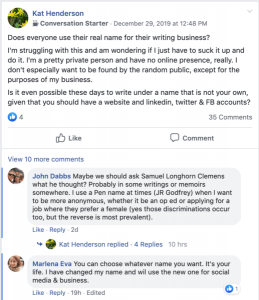— December 13, 2018

Pexels / Pixabay
My husband and I recently purchased a 1927 craftsman home, and we’re embarking on a major renovation project. It’s an exciting endeavor, but no matter how much preparation and planning we do, I know there will be challenges along the way. Even though we’re in the early stages, I continue to be reminded of how similar this process is to a website redesign. Here are four tips I can offer from my own home renovation experience that you can apply to your next website construction project.
1. Hire Qualified Experts
I’ll admit, as we started talking to architects and design-build firms for our home renovation, the estimates for their services were not cheap, and we briefly asked ourselves, “Do we really have to use an architect?” The answer is a definite “yes.”
Although ads for do-it-yourself website platforms make it seem easy and your nephew built a site for his college organization, don’t entrust your web redesign project to amateurs. Your website is arguably the most critical marketing tool for your business. Your website redesign is not an area to cut corners to save money.
A qualified UX (user experience) strategist can offer insights and plans early on that can prevent future headaches. Companies typically redesign their sites every three to four years, but proper UX planning can add longevity to your site and make future updates less significant. If your site is built on a solid foundation of persona research and information architecture, you won’t need to redesign so soon, ultimately saving thousands of dollars. Your UX strategist can work with you to understand the goals of your website and translate that into informed decisions regarding your site’s architecture.
When comparing web design companies, ask about their UX planning process. Find out if they create custom wireframes or if they merely modify templates. Check their credentials and ask for references. Don’t be enamored with how their previous sites look—find out how the sites perform. Good design begins long before selecting colors and images.
2. Don’t Ignore Functionality
Once we selected our experts for the remodeling project, they had us complete a lengthy form with questions that focused less on personal taste and more on function. Who does the cooking? Are they left or right handed? Do you like to entertain? Do you frequently have overnight guests? The answers to these questions will ensure the home not only looks great but also functions well for our needs.
Unfortunately, many clients and web design companies focus on how the site looks on a desktop computer, while mobile or tablet design is an afterthought. According to We Are Social’s Digital in 2018 report, 52.2 percent of all website traffic worldwide is now generated through mobile phones. Though it all depends on how your buyer personas will be viewing your site, it’s most likely true that mobile can’t be an afterthought.
Think strategically not only on how the site looks on a mobile device, but most importantly, on how it functions. Many times, the navigation has to change, content must be trimmed, or functional components have to be rethought. Strong UX and web design experts will address mobile adaptivity early in the conversation and ensure your site will function well for your audience.
3. Brand Consistency Is Key
We’ve already started creating a library of images to help make selections like tile, cabinet color, and countertops. Although it’s okay to collect all of these photos for consideration when we look at them as a collection, we realize they don’t all go together. We’ll have to take the era of the house into consideration and narrow our selections so there is a sense of consistency throughout the home.
This is where a robust visual brand identity comes in. Many companies have logo guidelines, and because of that, mistakenly think they have a brand style guide. Your logo is undoubtedly a critical component, but it’s important to also establish standards for your
- color palette
- typography
- image selection
- use of iconography
- messaging tone and voice
- and several other factors
If these guidelines have not yet been determined for your business, the beginning of a website redesign is the perfect time to establish them. A simplified version of these standards can be organized in the form of a mood board. Not only will they help set your website apart, but the guidelines can also be used to ensure that all subsequent marketing communications are consistent with your brand.
4. Invest in Quality
When it comes time for us to make final selections for the home, I suspect we may be tempted to go with cheaper products to save some money up front. But in reality, when it comes to resale, potential buyers will recognize quality materials and the investment will pay off. With your website, this is particularly true with the imagery you use.
If you have a unique product, location, or service, invest in a quality photoshoot with a respected photographer. I have seen many beautifully designed websites ruined by poor product photography. If your line of business is less tangible and doesn’t justify a custom shoot, be sure to use high-quality stock photography that feels genuine and natural. If you’re including staff or leadership team photos on your site, invest in a talented portrait photographer to capture the images in a unique way. It may be a little more expensive up front, but your audience and customers will notice.
Your website redesign is a significant investment, and it’s essential it is done right so you can reap the benefits for years to come. If you seek the help of specialists and experts, invest in planning and quality, and stay true to your brand, your website construction process is sure to provide the return you are seeking.
Digital & Social Articles on Business 2 Community
(53)






